How to use mockjs to randomly simulate data in Vue3+Vite project
在vite中使用mockjs进行模拟数据,需要借助新的依赖进行使用
一、安装mockjs
yarn add mockjs -S 或 npm i mockjs -D
二、安装vite-plugin-mock
npm i vite-plugin-mock -D
三、在src/mock/source文件夹下创建user.ts

在index.vue中放入以下内容:
import { MockMethod } from 'vite-plugin-mock'
export default [
{
url: '/api/getUserInfo', // 注意,这里只能是string格式
method: 'get',
response: () => {
return {
menusList: [{
id: '1',
title: '南辰',
subMenuList: [
{
id: '11',
title: '南',
path: '/user/nan'
},
{
id: '12',
title: '小',
path: '/user/xiao'
},
{
id: '13',
title: '辰',
path: '/user/chen'
}
]
}, {
id: '2',
title: '希',
subMenuList: [
{
id: '21',
title: '玩游戏',
path: '/user/play'
}
]
}]
}
}
}
] as MockMethod[] // 这里其实就是定义数据格式的,不了解的同学可以参考typescript的官方文档四、开发环境配置
如果只是本地开发环境时使用,直接看下面即可步骤
在vite.config.ts进行个人配置
import { viteMockServe } from 'vite-plugin-mock'
export default defineConfig({
plugins: [
viteMockServe({
mockPath: "./src/mock/source", // 解析刚刚user.ts的位置
localEnabled: true // 是否开启开发环境
})
]
})在页面中引入
<template>
<div>{{name.name}}</div>
<div>{{nc}}</div>
</template>
<script lang='ts'>
import { useRoute } from "vue-router"; //引入路由组件
import { onMounted, ref } from "vue";
import axios from "axios";
export default {
setup() {
const nc = ref("");
onMounted(() => {
axios.get("/api/getUserInfo").then((res) => {
console.log(res);
nc.value = res.data.menusList[0].title;
console.log(nc.value);
});
});
const $route = useRoute();
const name = $route.query;
return {
name,
nc,
};
},
};
</script>
<style scoped>
</style>打印效果如下: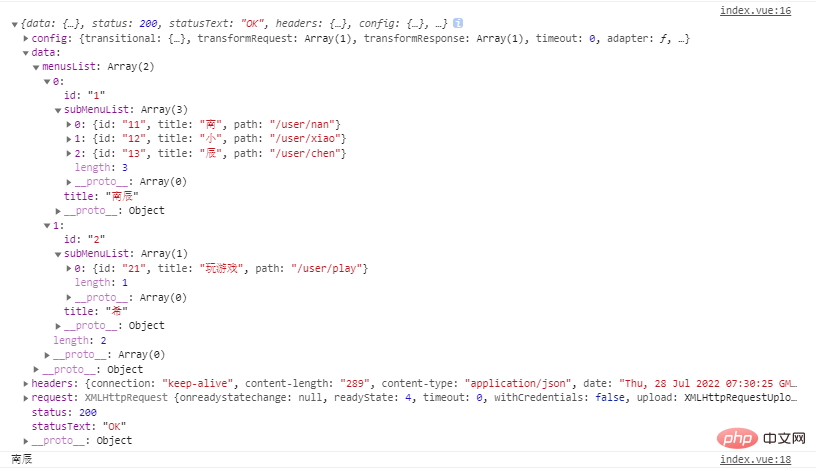
如果想使用随机数可以看接下来的步骤
如果只要随机数则直接生成即可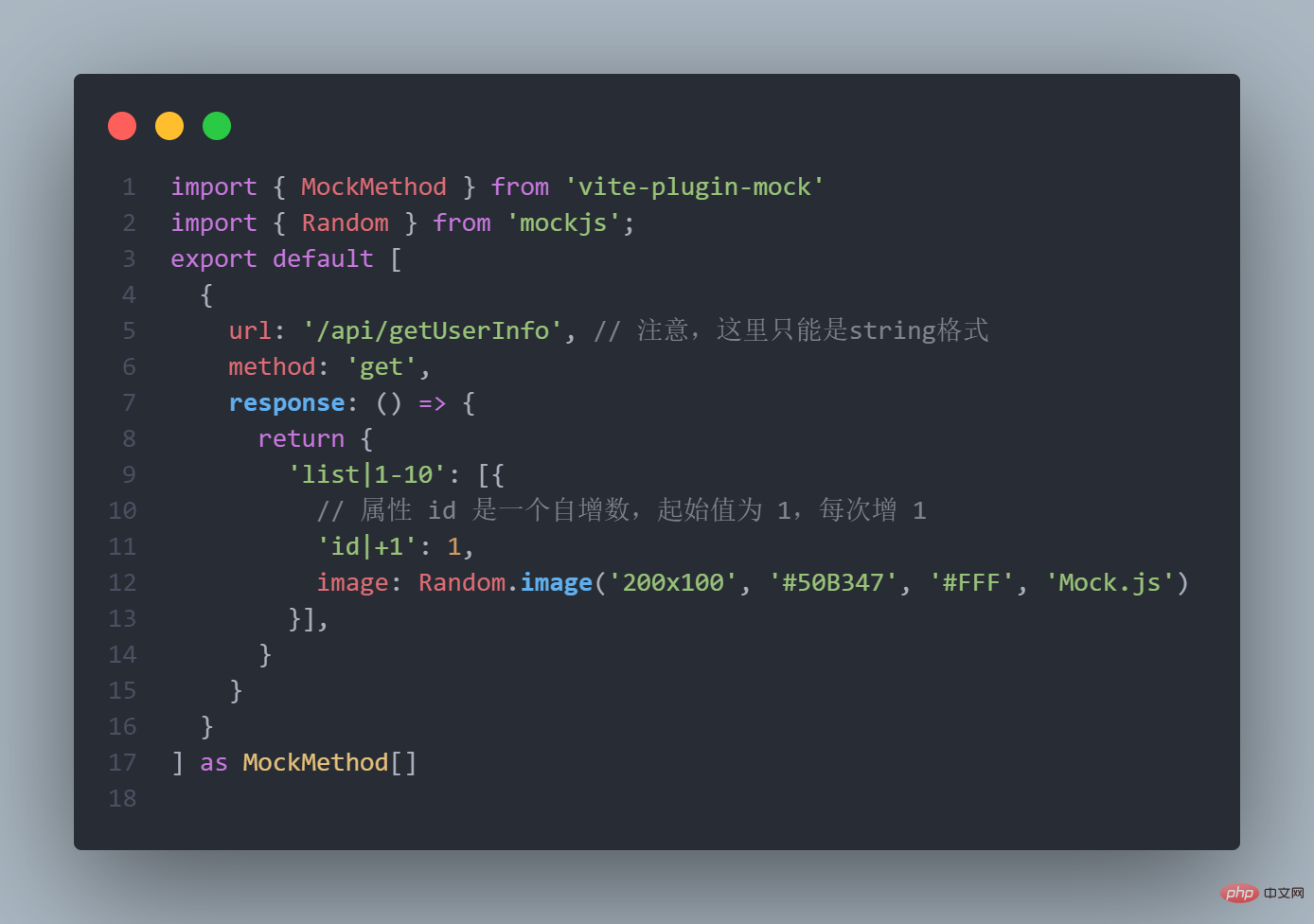
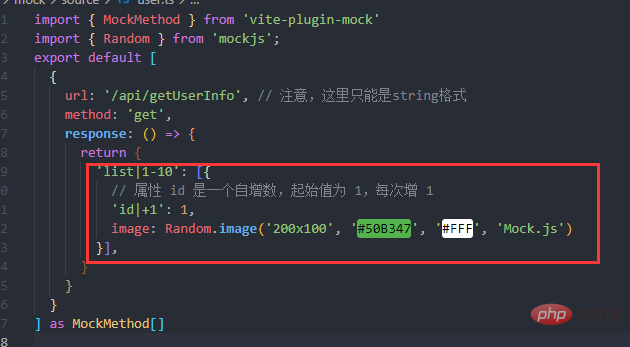
想要随机数在return中放入随机条件即可。
如果想要用随机数中的图片就需要从mockjs中引入一个Random方法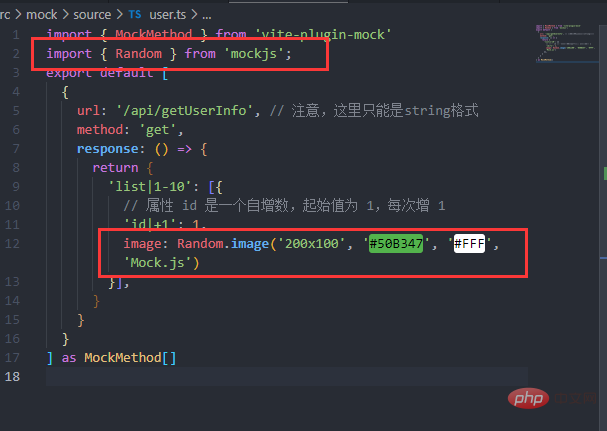
在页面上进行循环:
<template>
<div v-for="(item,index) in list" :key="index">
<img :src="item.image" alt="">
<p>{{item.id}}</p>
</div>
</template>
<script lang='ts'>
import { useRoute } from "vue-router"; //引入路由组件
import { onMounted, ref } from "vue";
import axios from "axios";
export default {
setup() {
const list = ref("");
onMounted(() => {
axios.get("/api/getUserInfo").then((res) => {
console.log(res);
let lis = res.data.list;
console.log(list.value =lis);
});
});
return {
nc,
list,
};
},
};
</script>
<style scoped>
</style>这里的Random.image()方法是从官网上拿下来用的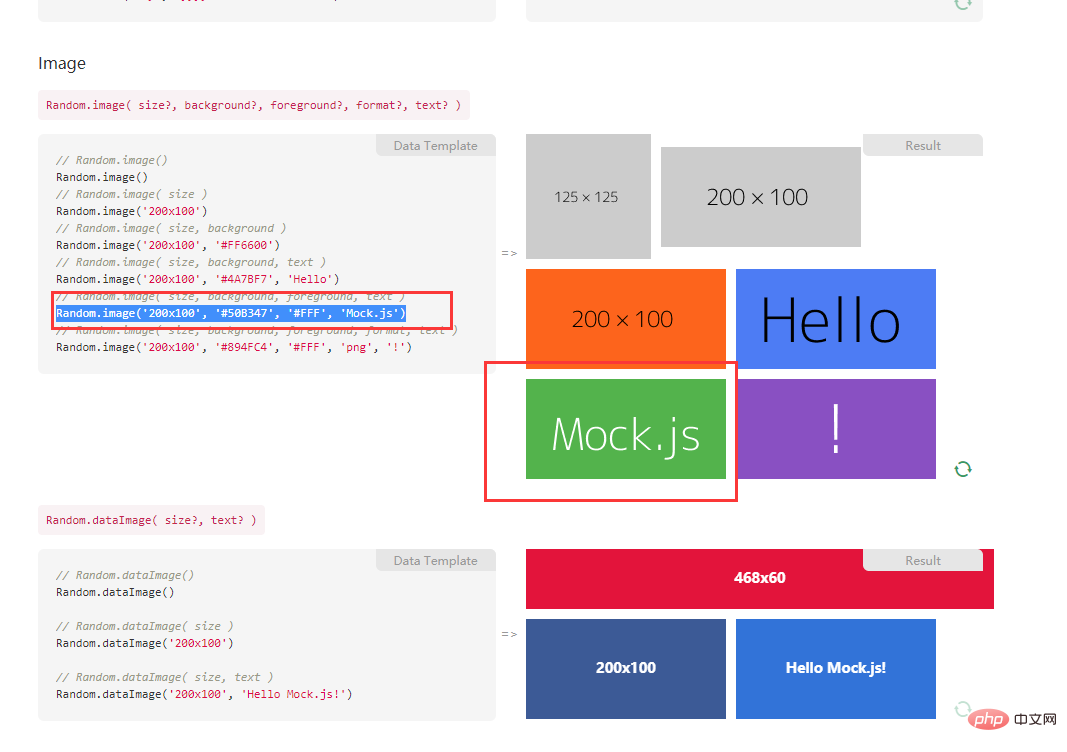
效果如下: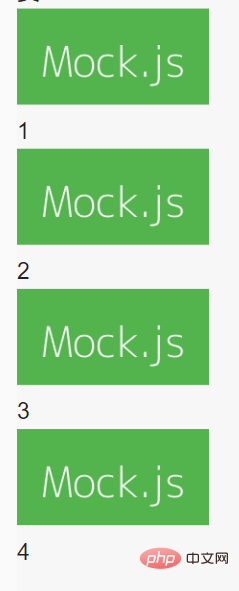
实现随机不同的图片+字段
import { MockMethod } from 'vite-plugin-mock'
export default [
{
url: '/api/getUserInfo', // 注意,这里只能是string格式
method: 'get',
response: () => {
return {
'list|1-10': [{
// 属性 id 是一个自增数,起始值为 1,每次增 1
'id|+1': 1,
/* image: Random.image() */
"title": "@ctitle",
"color":'@color',
"image":"@image('','@color')"
}],
}
}
}
] as MockMethod[]index.vue
<template>
<div v-for="(item,index) in list" :key="index">
<img src="/static/imghw/default1.png" data-src="item.image" class="lazy" : alt="">
{{item.title}}
</div>
</template>
<script lang='ts'>
import { useRoute } from "vue-router"; //引入路由组件
import { onMounted, ref } from "vue";
import axios from "axios";
export default {
setup() {
const list = ref("");
onMounted(() => {
axios.get("/api/getUserInfo").then((res) => {
console.log(res);
let lis = res.data.list;
console.log(lis);
console.log(list.value = lis);
});
});
return {
list,
};
},
};
</script>
<style scoped>
</style>
效果如下: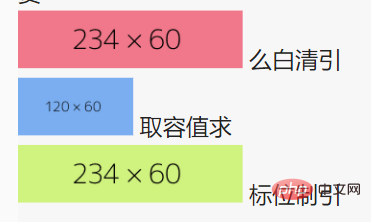
The above is the detailed content of How to use mockjs to randomly simulate data in Vue3+Vite project. For more information, please follow other related articles on the PHP Chinese website!

Hot AI Tools

Undresser.AI Undress
AI-powered app for creating realistic nude photos

AI Clothes Remover
Online AI tool for removing clothes from photos.

Undress AI Tool
Undress images for free

Clothoff.io
AI clothes remover

AI Hentai Generator
Generate AI Hentai for free.

Hot Article

Hot Tools

Notepad++7.3.1
Easy-to-use and free code editor

SublimeText3 Chinese version
Chinese version, very easy to use

Zend Studio 13.0.1
Powerful PHP integrated development environment

Dreamweaver CS6
Visual web development tools

SublimeText3 Mac version
God-level code editing software (SublimeText3)

Hot Topics
 Vue3+TS+Vite development skills: how to optimize SEO
Sep 10, 2023 pm 07:33 PM
Vue3+TS+Vite development skills: how to optimize SEO
Sep 10, 2023 pm 07:33 PM
Vue3+TS+Vite development skills: How to perform SEO optimization SEO (SearchEngineOptimization) refers to optimizing the structure, content and keywords of the website to rank it higher in search engines, thereby increasing the website's traffic and exposure. . In the development of modern front-end technologies such as Vue3+TS+Vite, how to optimize SEO is a very important issue. This article will introduce some Vue3+TS+Vite development techniques and methods to help
 vue3+vite: How to solve the error when using require to dynamically import images in src
May 21, 2023 pm 03:16 PM
vue3+vite: How to solve the error when using require to dynamically import images in src
May 21, 2023 pm 03:16 PM
vue3+vite:src uses require to dynamically import images and error reports and solutions. vue3+vite dynamically imports multiple images. If vue3 is using typescript development, require will introduce image errors. requireisnotdefined cannot be used like vue2 such as imgUrl:require(' .../assets/test.png') is imported because typescript does not support require, so import is used. Here is how to solve it: use awaitimport
 How to use tinymce in vue3 project
May 19, 2023 pm 08:40 PM
How to use tinymce in vue3 project
May 19, 2023 pm 08:40 PM
tinymce is a fully functional rich text editor plug-in, but introducing tinymce into vue is not as smooth as other Vue rich text plug-ins. tinymce itself is not suitable for Vue, and @tinymce/tinymce-vue needs to be introduced, and It is a foreign rich text plug-in and has not passed the Chinese version. You need to download the translation package from its official website (you may need to bypass the firewall). 1. Install related dependencies npminstalltinymce-Snpminstall@tinymce/tinymce-vue-S2. Download the Chinese package 3. Introduce the skin and Chinese package. Create a new tinymce folder in the project public folder and download the
 How Vue3 parses markdown and implements code highlighting
May 20, 2023 pm 04:16 PM
How Vue3 parses markdown and implements code highlighting
May 20, 2023 pm 04:16 PM
Vue implements the blog front-end and needs to implement markdown parsing. If there is code, it needs to implement code highlighting. There are many markdown parsing libraries for Vue, such as markdown-it, vue-markdown-loader, marked, vue-markdown, etc. These libraries are all very similar. Marked is used here, and highlight.js is used as the code highlighting library. The specific implementation steps are as follows: 1. Install dependent libraries. Open the command window under the vue project and enter the following command npminstallmarked-save//marked to convert markdown into htmlnpmins
 How to refresh partial content of the page in Vue3
May 26, 2023 pm 05:31 PM
How to refresh partial content of the page in Vue3
May 26, 2023 pm 05:31 PM
To achieve partial refresh of the page, we only need to implement the re-rendering of the local component (dom). In Vue, the easiest way to achieve this effect is to use the v-if directive. In Vue2, in addition to using the v-if instruction to re-render the local dom, we can also create a new blank component. When we need to refresh the local page, jump to this blank component page, and then jump back in the beforeRouteEnter guard in the blank component. original page. As shown in the figure below, how to click the refresh button in Vue3.X to reload the DOM within the red box and display the corresponding loading status. Since the guard in the component in the scriptsetup syntax in Vue3.X only has o
 Vue3+TS+Vite development skills: how to encrypt and store data
Sep 10, 2023 pm 04:51 PM
Vue3+TS+Vite development skills: how to encrypt and store data
Sep 10, 2023 pm 04:51 PM
Vue3+TS+Vite development tips: How to encrypt and store data. With the rapid development of Internet technology, data security and privacy protection are becoming more and more important. In the Vue3+TS+Vite development environment, how to encrypt and store data is a problem that every developer needs to face. This article will introduce some common data encryption and storage techniques to help developers improve application security and user experience. 1. Data Encryption Front-end Data Encryption Front-end encryption is an important part of protecting data security. Commonly used
 Vue3+TS+Vite development skills: how to optimize cross-domain requests and network requests
Sep 09, 2023 pm 04:40 PM
Vue3+TS+Vite development skills: how to optimize cross-domain requests and network requests
Sep 09, 2023 pm 04:40 PM
Vue3+TS+Vite development skills: How to optimize cross-domain requests and network requests Introduction: In front-end development, network requests are a very common operation. How to optimize network requests to improve page loading speed and user experience is one of the issues that our developers need to think about. At the same time, for some scenarios that require sending requests to different domain names, we need to solve cross-domain issues. This article will introduce how to make cross-domain requests and optimization techniques for network requests in the Vue3+TS+Vite development environment. 1. Cross-domain request solution
 How to use Vue3 reusable components
May 20, 2023 pm 07:25 PM
How to use Vue3 reusable components
May 20, 2023 pm 07:25 PM
Preface Whether it is vue or react, when we encounter multiple repeated codes, we will think about how to reuse these codes instead of filling a file with a bunch of redundant codes. In fact, both vue and react can achieve reuse by extracting components, but if you encounter some small code fragments and you don’t want to extract another file, in comparison, react can be used in the same Declare the corresponding widget in the file, or implement it through renderfunction, such as: constDemo:FC=({msg})=>{returndemomsgis{msg}}constApp:FC=()=>{return(






